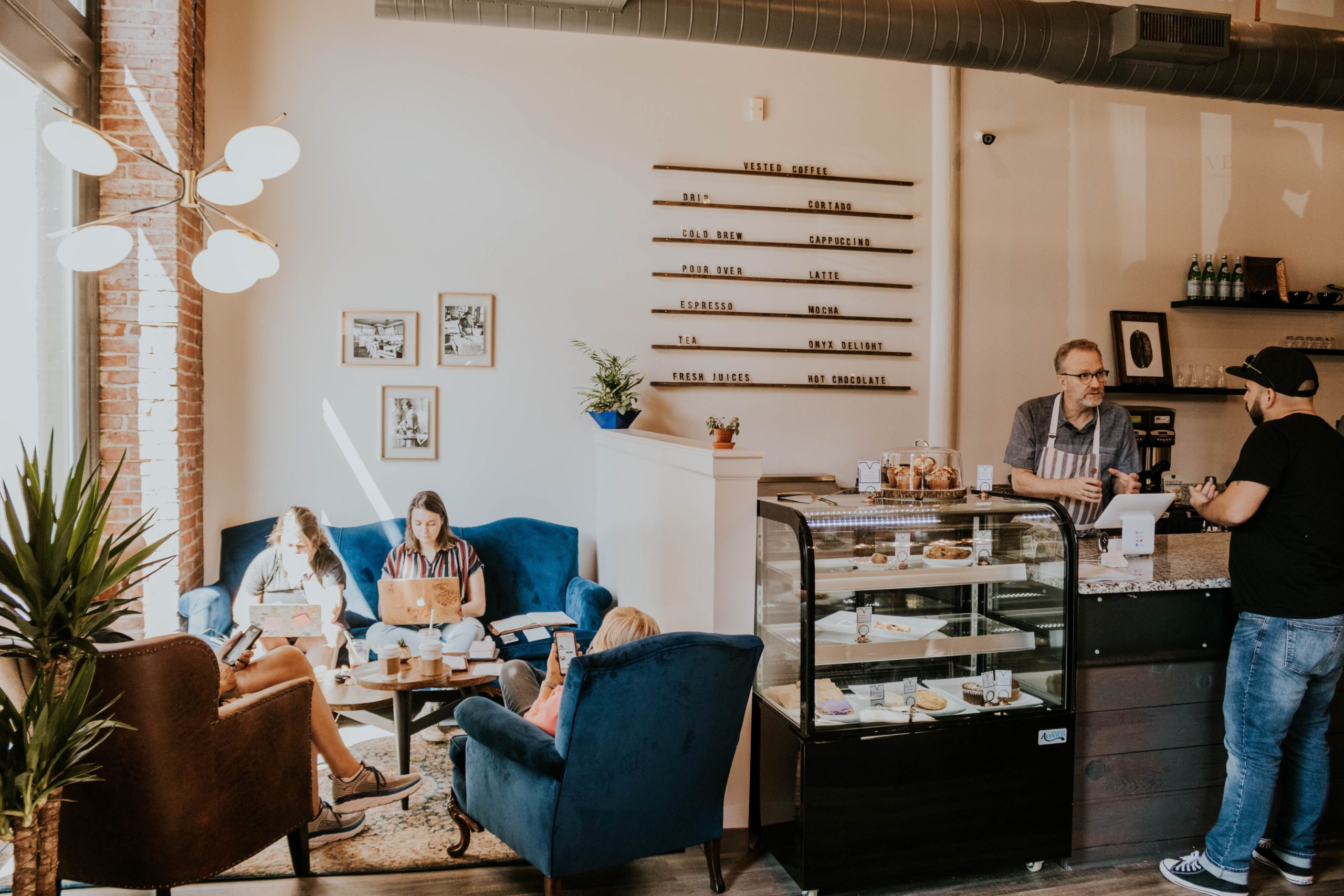The COVID-19 pandemic forced many hotels and hostels to successfully pivot their business models in order to survive. It was a smart move – diversifying your hotel’s revenue provides financial stability for your business and reduces risk.
This has never been more important – businesses with multiple revenue streams already in place were in a better position to withstand the negative effects of the pandemic. The ability to react quickly and stay flexible – as well as a willingness to take risks – was especially vital during this period.
But increasing the average spend per guest should not just be the focus during a pandemic. Hiking room rates isn’t the only option to boost revenue generation – there are countless innovative tactics you can use to leverage your hotel’s assets to open new revenue streams, grow your customer base and build a wider community around your brand.
Below, we explore some of the most effective ways to diversify your hotel’s revenue…
1. OFFER A COWORKING SPACE
Coworking is a concept that was already growing rapidly prior to 2020 with a yearly growth rate of 21.3%. The sector’s growth has been accelerated further in recent months with more companies embracing flexible working as a result of COVID-19.
Hotels often already have the necessary facilities and infrastructure in place to provide a workspace for their guests. Monetizing underused space by repurposing shared areas as coworking spaces is a great way to capitalise on the rise of remote working and generate extra revenue. Having a dedicated coworking space also provides an appealing add-on for your existing guests (and a great booking motivator!) – particularly if your hotel attracts business travellers.
There are a number of routes you can choose to go down depending on the space you have available – from offering flexible ‘hot desks’ to ‘fixed desks’ and even renting out rooms as private offices. You can charge a set monthly or weekly membership fee, a day rate or ‘pay-by-use’ option. Just remember to include perks (free coffee, anyone?) to attract workers.
Germany’s 25hours Hotels harnessed this to great effect by opening up their rooms as Covid-secure offices which guests could rent for a day or a week. This move – which was born out of necessity when 25hours were forced to cut overnight stays as a result of the pandemic – helped recover lost revenue and built brand awareness through media coverage which in turn helped with overnight stay recovery.
Over in Amsterdam, Zoku began offering an “office-away-from-home-office” for locals. For €60 per day, workers can set up in one of their innovative loft apartments with access to free wifi, lunch and hot drinks available.
If you have recently converted part of your hotel or hostel into a coworking space – or plan to do so in the future – check out our guide to marketing a coworking space here.
2. INTEGRATE WITH YOUR COMMUNITY
If your hotel has traditionally focused on travellers and tourists, it might be time to look a little closer to home. Establishing your hotel as a neighbourhood hub will create a buzz around your brand, open up your space to a wider audience and increase your revenue. But how do you get locals through the doors?
First of all, make sure your marketing appeals to the different segments you are targeting. This means clearly defining your guest personas, balancing your content across the services and experiences you provide and switching up your website to appeal to a local market as well as tourists. More on that in our guide to marketing to multiple audiences.
Next, think about what your community needs and then provide it. Host community events to bring people together and promote your F&B offering to locals with a loyalty scheme that encourages repeat visits. Ultimately, by putting in the effort to develop a space where locals can work, eat, relax and enjoy their neighbourhood, you are building a steady, year-round revenue stream that you can rely on.
3. PROVIDE EXPERIENCES AND ACTIVITIES
It’s common knowledge in the travel industry that guests want original experiences. Providing experiences through your hotel opens up another revenue stream and is a surefire way to improve your guest experience.
An excellent example of this in practice is Birch (who were recently named The Times Hotel of the Year) – they run events and classes for guests including jewellery-making sessions, watercolour workshops and a range of fitness classes.
If you don’t want to organize your own experiences, you can partner up with local agencies and businesses to facilitate your guests. From surf lessons to cycling tours, tailor experiences to your destination and consider if there’s anything you can offer that no one else is providing.
Of course, in today’s digital world, it’s not enough to wait until a guest is checking in to tell them all about the exciting experiences on offer. People use social media, blogs and email newsletters to get inspiration and plan for their next trip. These platforms give you a huge opportunity to upsell your experiences, attract more potential guests and boost your bottom line.
4. CREATE A VOUCHER SCHEME
Offering vouchers for future stays or activities is a low-fuss option for additional revenue. Driven by the move towards experiences over things that we just mentioned, more and more people are gifting experiences to their loved ones. Additionally, people are looking to support the brands they love through this tough period and buying a voucher to be redeemed when ‘normal life’ resumes is the perfect way to do this.
During the pandemic, we collaborated with others in our industry to launch the Adopt a Hostel voucher campaign. To date, the campaign has generated over $100,000 in revenue for hostels around the world which demonstrates the power of this approach.
5. OFFER EXTENDED STAY OPTIONS TO GUESTS
During the COVID-19 crisis, many hotels and hostels have pivoted towards an extended stay model by offering guests longer stays or coliving options at competitive rates. With all the amenities included and no long-term leases to worry about, this option is a cost-effective and convenient alternative to renting a traditional apartment. In the US, hotel demand during the downturn demonstrated more staying power in the extended stay segment than in other parts of the hospitality industry.
It’s important to consider the needs of extended-stay guests vs traditional leisure travellers. Extended stay guests will require additional services, from laundry to housekeeping, as well as onsite amenities like common areas, kitchens, gyms and outdoor space. Your F&B offering may need to shift slightly, too – for example, can you offer grab-and-go breakfasts and lunches for guests on the move?
Along with these changes, you may need to re-strategise your marketing to showcase the specific products and amenities which appeal to extended-stay guests to motivate them to book with you. You will definitely want to segment your email marketing so you’re communicating differently with extended stay guests – those staying in your destination for longer periods might require more frequent, ongoing communication during their stay than regular guests.
6. HARNESS THE POWER OF PACKAGES
An Expedia report found that hotel guests who purchase packages spend more on their rooms – and book more room nights – compared to those who opt for standalone rooms. They also found those who purchased a package paid around 30% more in average daily room rates (ADRs) therefore by offering special deals and promotions, you are able to increase both the perceived value of their guest experience and the financial yield from their bookings.
Packages take the stress out of planning for your guests and give you an opportunity to differentiate yourself from the competition. They give your business an edge on OTAs and provide guests with a real motivation to book direct with you for a great deal that they can’t find elsewhere. Here in the UK, package bookings also have almost double the length of stay than a standalone accommodation booking. From digital nomad to wellness options, tailoring your packages to the interests and preferences of your specific target audiences will increase their success.
Ready to get started? For more information on building and marketing packages (including tonnes of templates and actionable tips), you can download our eBook – The Staycation Marketing Guide.
7. UTILISE TIME BETWEEN CHECK-OUT AND CHECK-IN
The average hotel room sits empty for 7 hours from the previous guest departing and the next guest arriving – during which time, the room is not bringing in any revenue. One way to plug this gap is with day-use bookings which involve allowing guests to book the room for a few hours during the day.
However, to increase profitability with less hassle, you should be upselling early check-ins and late check-outs to existing guests. Don’t wait for guests to request this – target them with offers through your marketing and in pre-stay mailers. You can also use these ‘perks’ as a direct booking motivator – for example, when guests book through your website, they get early check-in or late check-out free.
In our experience running direct booking campaigns for clients, value-added offers like this can be more effective than simply offering a % off in exchange for booking direct.
8. LEVERAGE YOUR AMENITIES
While your hotel facilities are there to keep guests happy, they may also be of interest to locals who live nearby. Do you have a gym or pool onsite? Consider offering monthly memberships for locals to use the facilities, too. What about a laundry service or parking spaces? Opening these up as services for the public could be another way to boost your revenue.
Of course, you should also balance this so that there is always enough space and availability for your guests. When it comes to marketing, as well as utilising the usual channels you could look into targeted paid ads in your location, local Facebook groups and even physical advertising.
9. INVEST IN F&B
Food and beverage is a huge part of the hotel experience and one of the key differentiators for your brand. In recent years, F&B has gone from an afterthought to a key revenue driver – as consumer demand (and spending) in this area continues to grow, you should be looking at how to maximise the profitability of your offering.
As always, consider your target market and their needs first. If you cater to mainly business travellers, for example, they may prefer the convenience of a room service offer. Or if you’re located in an adventure destination where guests are always on the move, then grab-and-go options or a self-service area are likely to prove popular. Right now, sustainable and healthy options are in high demand and travellers often want to sample local specialities in their destination.
It’s also a great idea to partner up with local food and beverage suppliers – not only does this help your guests feel more immersed in the neighbourhood, but it is also a way to support the local economy and wider community.
Recent social distancing measures have impacted F&B and driven innovation in F&B. Swedish hotel Stadshotellet transformed its unused rooms into the “67 Pop Up Restaurant’ – this clever solution meant that restaurant guests could dine in a private room. Many businesses have also extended their F&B options to people outside of their hotels by leveraging food delivery services.
10. CREATE A SUBSCRIPTION SERVICE
Subscriptions are already widely popular across a number of industries (hello, Netflix) but they were just starting to gain traction within the travel and hospitality sectors pre-pandemic. The main strength of the subscription model is that it provides a predictable, recurring revenue stream and drives serious brand loyalty by effectively tying customers to a specific brand.
An innovative example comes from citizenM who introduced a corporate subscription – a smart alternative for frequent business travellers and companies whose employees travel regularly. For a monthly or annual fee, members get access to a daily workspace in any citizenM hotel living room, 3 nights stay per month at any citizenM hotel, 3 hours of meeting room use and other perks including breakfast, welcome drinks and special discounts.
Selina are another big player to bring subscriptions into the travel mainstream with their work-from-anywhere model. The boutique brand has always catered to digital nomads, offering coworking spaces, wellness programming and curated experiences across their 74 global locations. They have since launched a Nomad Passport subscription program and a CoLive rental program which gives guests the freedom to move among Selina properties for a monthly or yearly fee (ranging from as little as $180 to over $2000 a month).
It’s this flexibility that makes subscription models so appealing to guests. When developing your own subscription offering, it’s important to consider what appeals to your target markets while finding an appropriate price point that can bring in profitable returns. You can widen your net by offering subscriptions to both travellers and locals alike – those in your neighbourhood might benefit from an overall amenity subscription which allows them to utilise your facilities.
When marketing a subscription service, you need to keep communications as clear and concise as possible. Anything overly-complicated will prove immediately off-putting to potential members. Consider soft-launching first to your current community (including your mailing list) to gauge interest and garner valuable feedback on your concept. Then, ramp up your marketing efforts with a targeted PR campaign to get people talking and make sure your subscription ends up in front of the right audiences.
11. LAUNCH AN ONLINE STORE
If you have built a strong community and loyal following around your brand, then an online shop could provide a valuable stream of revenue. But you need to think outside of the box to appeal to guests as typical tourist souvenirs just won’t cut it.
A good starting point is to consider what your guests mention in their reviews – do they rave about your comfy duvets or plush bathrobes? What about the artwork you have in the hotel or your complimentary toiletries? Make sure you partner up with suppliers to offer these items for purchase online. Marketing-wise, you don’t want to go too salesy on your social channels but you could have fun creating content that features the products you offer. Think of it like the product placement you see on TV – subtle but effective.
A brand we love that does this well is The Standard – their online shop is packed full of things that guests will actually want to buy. Check out their “Found at The Standard” selection which lists products you can find onsite, including candles, luxury robes and even salt and pepper shakers.
12. PARTNER WITH ARTISTS
Are your target audience a cultural crowd? If so, partnering with local artists to create a gallery area and sell their work in your hotel can be a great way to boost revenue. Firstly, it will integrate your space with the local community and attract more people through the door. It will also impress your guests and add a unique point of interest to your space.
Create artist residencies so you can rotate the gallery every quarter, maximising the revenue available and the exposure for the artists involved. You could even go one step further and host a special Q&A event with the artist involved which enhances your event’s programming and attracts more customers.
13. ENCOURAGE UPGRADES AND EXTRAS
Offering additional convenience services is a great way to improve your guest experience while increasing revenue at the same time – so everybody wins. You could start by helping your guests get around by offering shuttle services to and from the airport or train station and transportation services to attractions in your local area.
Another option is to create special touches that are available as an extra upon booking – for example, providing a bottle of champagne in the room upon arrival or a welcome hamper of local treats for guests to enjoy. A good starting point when adding elements like this is to speak to your team on the ground and find out what guests typically ask for during their stay – this should give you a good idea of what might be in demand. Make these upgrades available through your online booking engine and on-site so it’s as flexible as possible for guests.
14. GET PET FRIENDLY
Many people want to travel with their furry friends but are often restricted when it comes to accommodation options. Making your property pet-friendly and offering pet services is another way to attract more business and increase revenue.
A great example of this is the Rosewood here in London – they offer a selection of special amenities to ensure their guest’s pets are given the VIP treatment. Their canine package even includes a one-hour pampering experience for your dog! You can also offer services like pet sitting or dog walking, be on hand with welcome treats on arrival and provide a comfy bed along with drink and food bowls to make them feel at home.
15. MONETISE VIRTUAL EVENTS
During this period, the use of technology to connect people has become more important than ever. Many of our clients were running physical events when lockdowns and restrictions began – making the switch to virtual programming meant they could continue to foster the community spirit they create onsite and stay at the forefront of guests’ minds. We found that audiences were happy to switch – plus, running events online means you can reach a wider audience. As long as you get the marketing right, it’s a great opportunity to grow awareness of your brand and create an extra stream of revenue.
The key is to give your audience a unique experience – something they can’t find anywhere else. Marketing-wise, utilise social media ads and leverage your email list to promote your events. And don’t forget about PR – here in London, some of the biggest online publications were plugging virtual events to their huge mailing lists right through lockdown.
Looking beyond COVID-19, think about how you can integrate virtual events with physical ones as an ‘add on’.
We hope this post has given you some food for thought on how to create multiple streams of income for your hotel. Feeling inspired to diversify your revenue? Let us know how you plan to take these points forward in the comments…
And if you are looking for support with your brand’s marketing, get in touch and let’s chat about how we can help you.

DOWNLOAD OUR WHITE PAPER – THE FUTURE OF HOSPITALITY: WHY 2021 IS THE YEAR OF THE HYBRID
Looking forward to 2021, the lines between where we live, work, and play are blurring faster than ever before. As people demand more from the hospitality experience, hybrids are in a strong position to meet this new consumer where they are. In this white paper, we share our 6 predictions on why 2021 will be the year of the hybrid. We also have interviews with leaders in this space who share their insights on the future of the industry.



